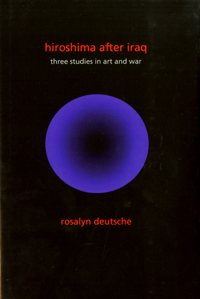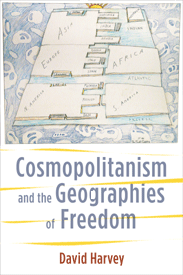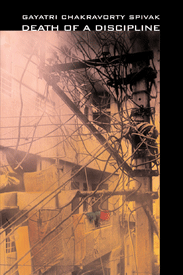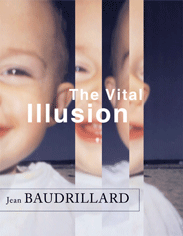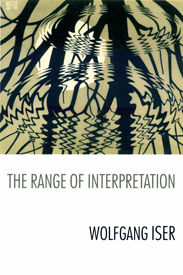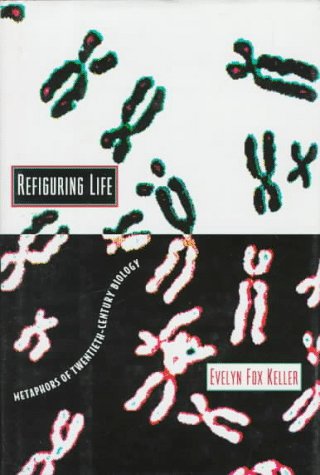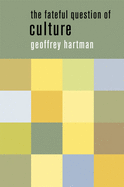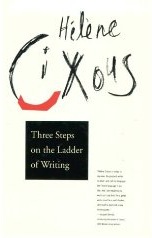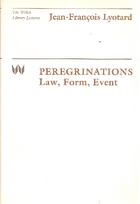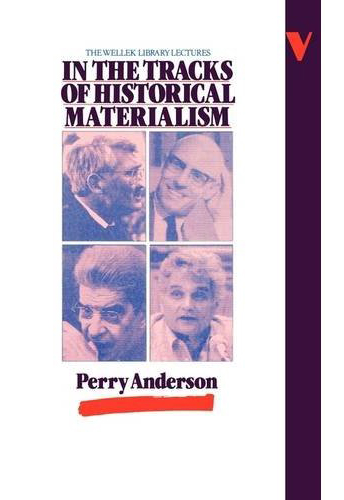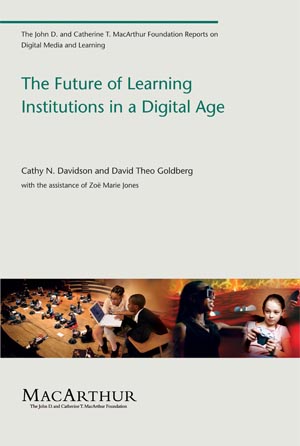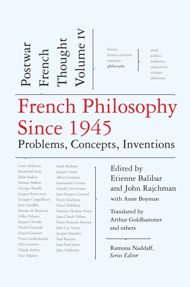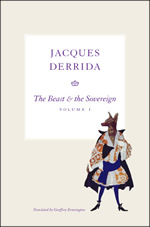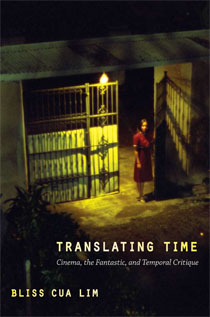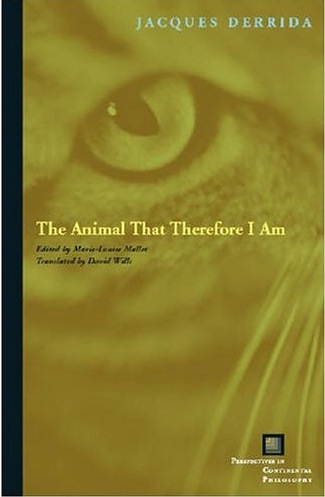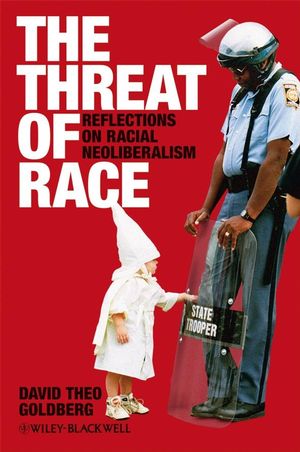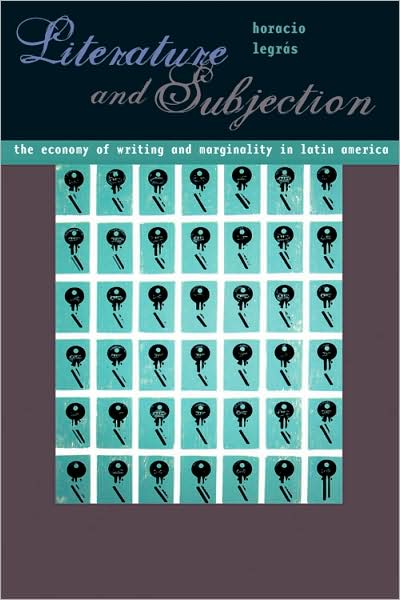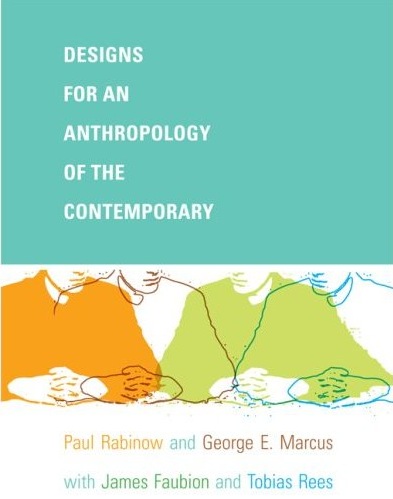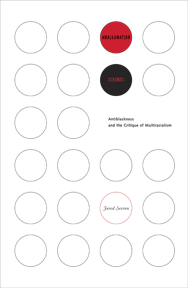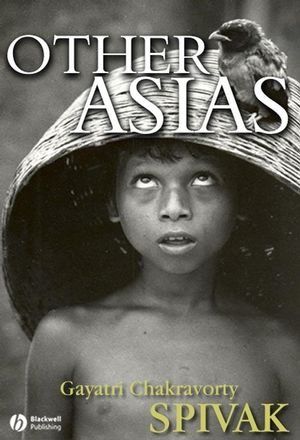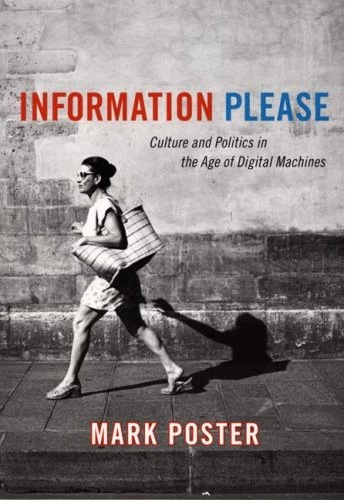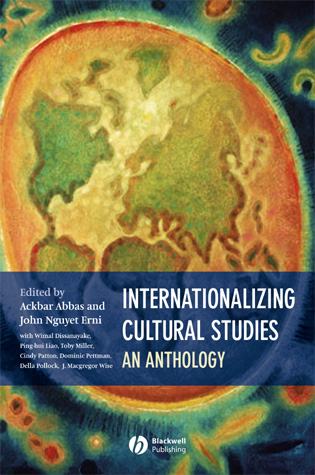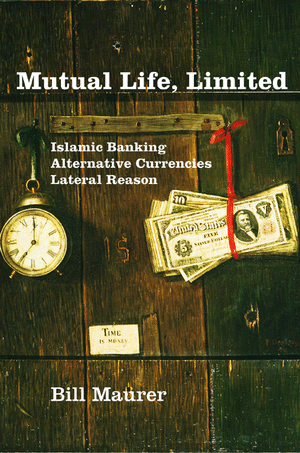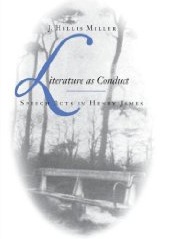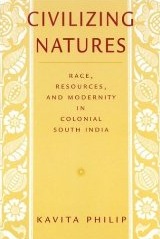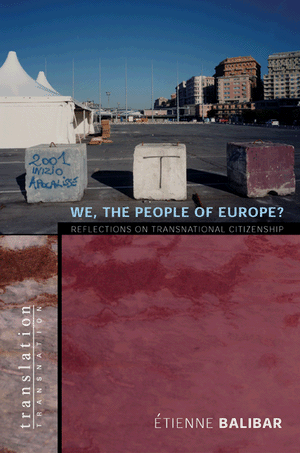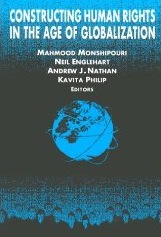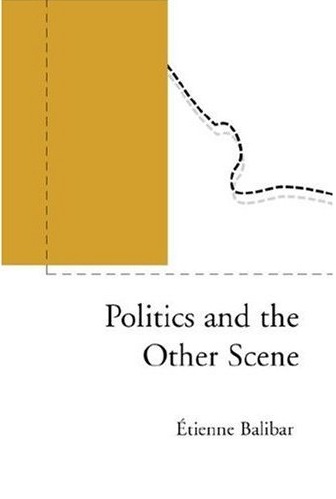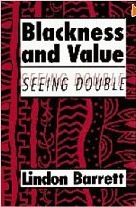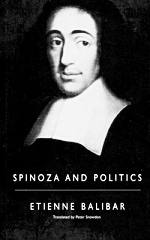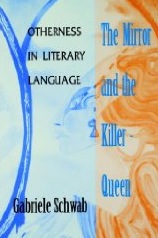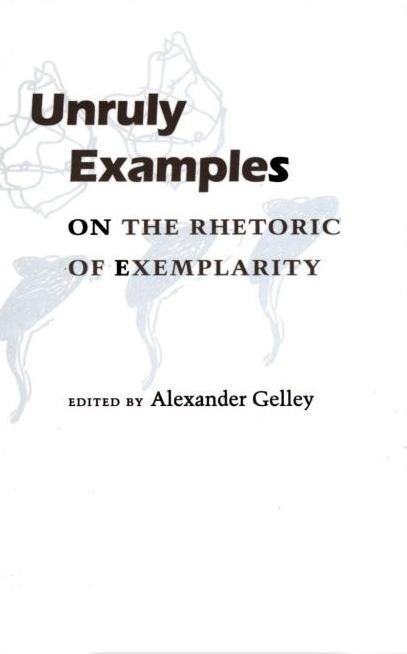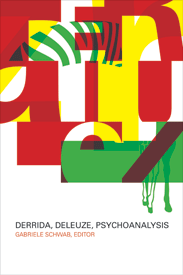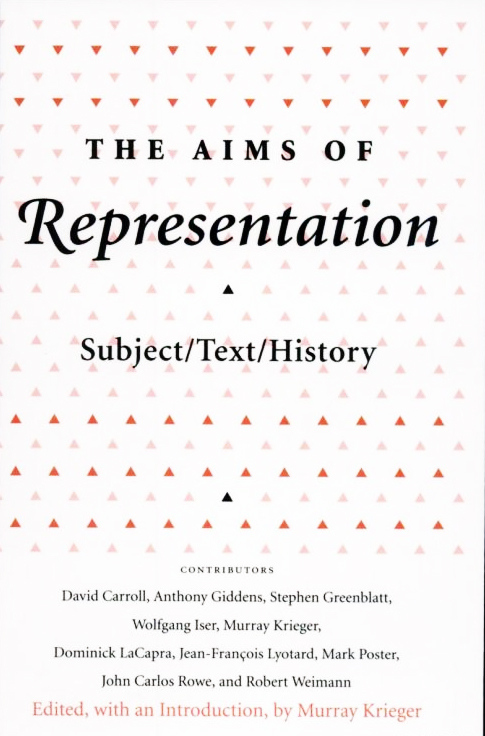Publications
| Image | Description |
|---|---|
Rosalyn Deutsche. Hiroshima After Iraq: Three Studies in Art and War. New York: Columbia, 2010. [WLL 2009] Many on the left lament an apathy or amnesia toward recent acts of war. Particularly during the George W. Bush administration's invasion of Iraq, opposition to war seemed to lack the heat and potency of the 1960s and 1970s, giving the impression that passionate dissent was all but dead. Through an analysis of three politically engaged works of art, Rosalyn Deutsche argues against this melancholic attitude, confirming the power of contemporary art to criticize subjectivity as well as war. Deutsche selects three videos centered on the deployment of the atomic bomb: Krzysztof Wodiczko's Hiroshima Projection (1999), made after the first Gulf War; Silvia Kolbowski's After Hiroshima mon amour (2005-2008); and Leslie Thornton's Let Me Count the Ways (2004-2008), which followed the U.S. invasion of Iraq. Each of these works confronts the ethical task of addressing historical disaster, and each explores the intersection of past and present wars. These artworks profoundly contribute to the discourse of war resistance, illuminating the complex dynamics of viewing and interpretation. Deutsche employs feminist and psychoanalytic approaches in her study, questioning both the role of totalizing images in the production of warlike subjects and the fantasies that perpetuate, especially among the left, traditional notions of political dissent. She ultimately reveals the passive collusion between leftist critique and dominant discourse in which personal dimensions of war are denied. |
|
David Harvey. Cosmopolitanism and the Geographies of Freedom. New York: Columbia UP, 2009. [WLL 2005] Liberty and freedom are frequently invoked to justify political action. Presidents as diverse as Woodrow Wilson, Franklin Delano Roosevelt, John F. Kennedy, Ronald Reagan, and George W. Bush have built their policies on some version of these noble values. Yet in practice, idealist agendas often turn sour as they confront specific circumstances on the ground. Demonstrated by incidents at Abu Ghraib and Guantánamo Bay, the pursuit of liberty and freedom can lead to violence and repression, undermining our trust in universal theories of liberalism, neoliberalism, and cosmopolitanism. Combining his passions for politics and geography, David Harvey charts a cosmopolitan order more appropriate to an emancipatory form of global governance. Political agendas tend to fail, he argues, because they ignore the complexities of geography. Incorporating geographical knowledge into the formation of social and political policy is therefore a necessary condition for genuine democracy. Harvey begins with an insightful critique of the political uses of freedom and liberty, especially during the George W. Bush administration. Then, through an ontological investigation into geography's foundational conceptsspace, place, and environmenthe radically reframes geographical knowledge as a basis for social theory and political action. As Harvey makes clear, the cosmopolitanism that emerges is rooted in human experience rather than illusory ideals and brings us closer to achieving the liberation we seek. |
|
Elizabeth Grosz. Chaos, Territory, Art: Deleuze and the Framing of the Earth. New York: Columbia UP, 2008. [WLL 2007] Instead of treating art as a unique creation that requires reason and refined taste to appreciate, Elizabeth Grosz argues that art-especially architecture, music, and painting-is born from the disruptive forces of sexual selection. She approaches art as a form of erotic expression connecting sensory richness with primal desire, and in doing so, finds that the meaning of art comes from the intensities and sensations it inspires, not just its intention and aesthetic. By regarding our most cultured human accomplishments as the result of the excessive, nonfunctional forces of sexual attraction and seduction, Grosz encourages us to see art as a kind of bodily enhancement or mode of sensation enabling living bodies to experience and transform the universe. Art can be understood as a way for bodies to augment themselves and their capacity for perception and affection-a way to grow and evolve through sensation. Through this framework, which knits together the theories of Charles Darwin, Henri Bergson, Gilles Deleuze, Félix Guattari, and Jakob von Uexküll, we are able to grasp art's deep animal lineage. Grosz argues that art is not tied to the predictable and known but to new futures not contained in the present. Its animal affiliations ensure that art is intensely political and charged with the creation of new worlds and new forms of living. According to Grosz, art is the way in which life experiments with materiality, or nature, in order to bring about change. |
|
Talal Asad. On Suicide Bombing. New York: Columbia UP, 2007. [WLL 2006] Like many people in America and around the world, Talal Asad experienced the events of September 11, 2001, largely through the media and the emotional response of others. For many non-Muslims, "the suicide bomber" quickly became the icon of "an Islamic culture of death"a conceptual leap that struck Asad as problematic. Is there a "religiously-motivated terrorism?" If so, how does it differ from other cruelties? What makes its motivation "religious"? Where does it stand in relation to other forms of collective violence? Drawing on his extensive scholarship in the study of secular and religious traditions as well as his understanding of social, political, and anthropological theory and research, Asad questions Western assumptions regarding death and killing. He scrutinizes the idea of a "clash of civilizations," the claim that "Islamic jihadism" is the essence of modern terror, and the arguments put forward by liberals to justify war in our time. He critically engages with a range of explanations of suicide terrorism, exploring many writers' preoccupation with the motives of perpetrators. In conclusion, Asad examines our emotional response to suicide (including suicide terrorism) and the horror it invokes. On Suicide Bombing is an original and provocative analysis critiquing the work of intellectuals from both the left and the right. Though fighting evil is an old concept, it has found new and disturbing expressions in our contemporary "war on terror." For Asad, it is critical that we remain aware of the forces shaping the discourse surrounding this mode of violence, and by questioning our assumptions about morally good and morally evil ways of killing, he illuminates the fragile contradictions that are a part of our modern subjectivity. |
|
| Angela Davis. Lectures on Abolition. New York: Columbia UP, forthcoming. [WLL 2003] | |
Paul Gilroy. Postcolonial Melancholia. New York: Columbia UP, 2004. [WLL 2002] In an effort to deny the ongoing effect of colonialism and imperialism on contemporary political life, the death knell for a multicultural society has been sounded from all sides. Thats the provocative argument Paul Gilroy makes in this unorthodox defense of the multiculture. Gilroys searing analyses of race, politics, and culture have always remained attentive to the material conditions of black people and the ways in which blacks have defaced the clean edifice of white supremacy. In Postcolonial Melancholia, he continues the conversation he began in the landmark study of race and nation 'There Aint No Black in the Union Jack by once again departing from conventional wisdom to examineand defendmulticulturalism within the context of the post-9/11 politics of security. This book adapts the concept of melancholia from its Freudian origins and applies it not to individual grief but to the social pathology of neoimperialist politics. The melancholic reactions that have obstructed the process of working through the legacy of colonialism are implicated not only in hostility and violence directed at blacks, immigrants, and aliens but in an inability to value the ordinary, unruly multiculture that has evolved organically and unnoticed in urban centers. Drawing on the seminal discussions of race begun by Frantz Fanon, W. E. B. DuBois, and George Orwell, Gilroy crafts a nuanced argument with far-reaching implications. Ultimately, Postcolonial Melancholia goes beyond the idea of mere tolerance to propose that it is possible to celebrate the multiculture and live with otherness without becoming anxious, fearful, or violent. |
|
Homi Bhabha. Scrambled Eggs & a Dish of Rice. New York: Columbia UP, forthcoming. [WLL 2001] |
|
Gayatri Chakravorty Spivak. Death of a Discipline. New York: Columbia UP, 2003. [WLL 2000] For almost three decades, Gayatri Chakravorty Spivak has been ignoring the standardized "rules" of the academy and trespassing across disciplinary boundaries. Today she remains one of the foremost figures in the study of world literature and its cultural consequences. In this new book she declares the death of comparative literature as we know it and sounds an urgent call for a "new comparative literature," in which the discipline is given new lifeone that is not appropriated and determined by the market. In the era of globalization, when mammoth projects of world literature in translation are being undertaken in the United States, how can we protect the multiplicity of languages and literatures at the university? Spivak demonstrates how critics interested in social justice should pay close attention to literary form and offers new interpretations of classics such as Joseph Conrads Heart of Darkness and Virginia Woolfs A Room of Ones Own. Through close readings of texts not only in English, French, and German but also in Arabic and Bengali, Spivak practices what she preaches. |
|
Jean Baudrillard. The Vital Illusion. Ed. Julia Witwer. New York: Columbia UP, 2000. [WLL 1999] Aren't we actually sick of sex, of difference, of emancipation, of culture? With this provocative taunt, the indomitable sociologist Jean Baudrillard challenges us to face up to our deadly, technologically empowered renunciation of mortality and subjectivity as he grapples with the complex issues that define our postmillennial world. What does the advent and proliferation of cloning mean for our sense of ourselves as human beings? What does the turn of the millennium say about our relation to time and history? What does the instantaneous, virtual realm of cyberspace do to reality? In The Vital Illusionas alwaysBaudrillard leads his readers to some surprising conclusions. Baudrillard considers how human cloningas well as the "cloning" of ideas and social identitiesheralds an end to sex and death and the divagations of living by instituting a realm of the Same, beyond the struggles of individuation. In this day and age when everything can be cloned, simulated, programmed, and genetically and neurologically managed, humanity shows itself unable to brave its own diversity, preferring instead to regress to the pathological eternity of self-replicating cells. By reverting to our viral origins as sexless immortal beings, we are, ironically, fulfilling a death wish, putting an end to our own species as we know it. Next, Baudrillard explores the "nonevent" that was and is the turn of the millennium. He provocatively puts forward the thesis that the arrival of the year 2000 could never take place because we could neither resolve nor leave behind our history, nor could we stop counting down toward our future. For Baudrillard, the millennial clock reading to the millionth of a second on its way to zero is the perfect symbol of our time: history decays rather than progresses. In closing, Baudrillard examines what he calls "the murder of the real" by the virtual. In a world of copies and clones in which everything can be made present in an instant by technology, we can no longer even speak of reality. Beyond Nietzsche's symbolic murder of God, our virtual world free of referents is in the process of exterminating reality, leaving no trace: "The corps(e) of the Realif there is anyhas not been recovered, is nowhere to be found." Peppered with Baudrillard's signature counterintuitive moves, prophetic visions, and dark humor, The Vital Illusion exposes the contradictions that guide our contemporary culture and rule our lives. |
|
Judith Butler. Antigones Claim: Kinship, Aberration, and Psychoanalysis. New York: Columbia UP, 2000. [WLL 1998] The celebrated author of Gender Trouble here redefines Antigone's legacy, recovering her revolutionary significance and liberating it for a progressive feminism and sexual politics. Butler's new interpretation does nothing less than reconceptualize the incest taboo in relation to kinshipand open up the concept of kinship to cultural change. Antigone, the renowned insurgent from Sophocles's Oedipus, has long been a feminist icon of defiance. But what has remained unclear is whether she escapes from the forms of power that she opposes. Antigone proves to be a more ambivalent figure for feminism than has been acknowledged, since the form of defiance she exemplifies also leads to her death. Butler argues that Antigone represents a form of feminist and sexual agency that is fraught with risk. Moreover, Antigone shows how the constraints of normative kinship unfairly decide what will and will not be a livable life. Butler explores the meaning of Antigone, wondering what forms of kinship might have allowed her to live. Along the way, she considers the works of such philosophers as Hegel, Lacan, and Irigaray. How, she asks, would psychoanalysis have been different if it had taken Antigonethe "postoedipal" subjectrather than Oedipus as its point of departure? If the incest taboo is reconceived so that it does not mandate heterosexuality as its solution, what forms of sexual alliance and new kinship might be acknowledged as a result? The book relates the courageous deeds of Antigone to the claims made by those whose relations are still not honored as those of proper kinship, showing how a culture of normative heterosexuality obstructs our capacity to see what sexual freedom and political agency could be. |
|
|
Harry D. Harootunian. Historys Disquiet: Modernity, Cultural Practice and the Question of Everyday Life. New York: Columbia UP, 2000. [WLL 1997] Acclaimed historian Harry Harootunian calls attention to the boundaries, real and theoretical, that compartmentalize the world around us. In one of the first works to explore on equal footing European and Japanese conceptions of modernityas imagined in the writings of Georg Simmel and Walter Benjamin, as well as ethnologist Yanagita Kunio and Marxist philosopher Tosaka JunHarootunian seeks to expose the problematic nature of scholarly categories. In doing so, History's Disquiet presents intellectual genealogies of such orthodox notions as "field" and "modernity" and other concepts intellectuals in the East and West have used to understand the changing world around them. Contrasting reflections on everyday life in Japan and Europe, Harootunian shows how responses to capitalist society were expressed in similar ways: social critics in both regions alleged a broad sense of alienation, particularly among the middle class. However, he also points out that Japanese critics viewed modernity as a condition in which Japanwithout the lengthy period of capitalist modernization that characterized Europe and Americawas either "catching up" with those regions or "copying" them. As elegantly written as it is controversial, this book is both an invitation for rethinking intellectual boundaries and an invigorating affirmation that such boundaries can indeed be broken down. |
| Étienne Balibar. Extreme Violence and the Problem of Civility. New York: Columbia UP, forthcoming [WLL 1996] | |
Wolfgang Iser. The Range of Interpretation. New York: Columbia UP, 2000. [WLL 1994] There is a tacit assumption that interpretation comes naturally, that human beings live by constantly interpreting. In this sense, we might even rephrase Descartes by saying: We interpret, therefore we are. While such a basic human disposition makes interpretation appear to come naturally, the forms it takes, however, do not. In this work, Iser offers a fresh approach by formulating an "anatomy of interpretation" through which we can understand the act of interpretation in its many different manifestations. For Iser, there are several different genres of interpretation, all of which are acts of translation designed to transpose something into something else. Perhaps the most obvious example of interpretation involves canonical texts, such as the Rabbinical exegesis of the Torah or Samuel Johnson's reading of Shakespeare. But what happens when the matter that one seeks to interpret consists not of a text but of a welter of fragments, as in the study of history, or when something is hidden, as in the practice of psychoanalysis, or is as complex as a culture or system? Iser details how, in each of these cases, the space that is opened up by interpretation is negotiated in a different way, thus concluding that interpretation always depends on what it seeks to translate. For students of philosophy, literary and critical theory, anthropology, and cultural history, Iser's elucidation of the mechanics by which we translate and understand, as well as his assessment of the anthropological roots of our drive to make meaning, will undoubtedly serve as a revelation. |
|
|
Evelyn Fox Keller. Refiguring Life: Metaphors of Twentieth-Century Biology. New York: Columbia UP, 1995. [WLL 1993] Refiguring Life begins with the history of genetics and embryology, showing how discipline-based metaphors have directed scientists' search for evidence. Keller continues with an exploration of the border traffic between biology and physics, focusing on the question of life and the law of increasing entropy. In a final section she traces the impact of new metaphors, born of the computer revolution, on the course of biological research. Keller shows how these metaphors began as objects of contestation between competing visions of the life sciences, how they came to be recast and appropriated by already established research agendas, and how in the process they ultimately came to subvert those same agendas. Refiguring Life explains how the metaphors and machinery of research are not merely the products of scientific discovery but actually work together to map out the territory along which new metaphors and machines can be constructed. Through their dynamic interaction, Keller points out, they definethe realm of the possible in science. Drawing on a remarkable spectrum of theoretical work ranging from Schroedinger to French psychoanalyst Jacques Lacan, Refiguring Life fuses issues already prominent in the humanities and social sciences with those in the physical and natural sciences, transgressing disciplinary boundaries to offer a broad view of the natural sciences as a whole. Moving gracefully from genetics to embryology, from physics to biology, from cyberscience to molecular biology, Evelyn Fox Keller demonstrates that scientific inquiry cannot pretend to stand apart from the issues and concerns of the larger society in which it exists. |
|
Geoffrey Hartman. The Fateful Question of Culture. New York: Columbia UP, 1997. [WLL 1992] One of our most incisive critics asks where the assault against the canons of Western culture has led us. Engaging a wide range of literature and criticism, Hartman considers the term "culture" and its many uses, and calls for the restoration of literature to its place as the focus of thinking about culture and for the renewal of aesthetic education to help ensure the balance between art, culture, and politics. Lost among the shouts and skirmishes of the "culture wars" is the very idea of culture itself. In this illuminating book, one of our most distinguished critics and scholars asks what the assault against the canons of Western culture has left in its place. If art and literature are largely the products of ideology and interest, how do they matter? And what does the idea of culture mean in today's sprawling, fragmented, critical world where everything -poetry or pornography- gets "read" in the same way? Engaging an extraordinary range of literature, philosophy, social criticism, and popular culture, Geoffrey Hartman probes the meanings and uses of culture in contemporary society. The triumph of cultural studies -and its critiques of bourgeois Eurocentric tradition- is largely complete, Hartman writes. Against the political appropriation of culture, he posits, instead, a definition of culture as public conversation, intellectual and social debate among diverse communities. And against reactionary pressures to impose -or reinstate- a singular culture, or to seek in art or literature an affirmation of group identity, Hartman sketches new roles for human imagination in a postmodern world. For Hartman, the fusion of culture and politics, of whatever ideology, is disastrous. At a time of abstraction, fragmentation, and alienation, art and literature offer wholeness and meaning. But the promise is frought with danger, Hartman argues, in a provocative discussion of the uses of culture as exemplified in the Romantic legacy. He pays special attention to literature's role in reconnecting us to the world. The choice is ours: Wordsworth or Heidegger, literature as shared experience or as reactionary ideology. Hartman ranges widely in these elegant pages. He confronts the shock to the universalistic sense of culture from the Holocaust, as well as the problematic responses of such critic as Adorno and Derrida; explores the poetry of Wordsworth both as a diagnostic and a counter-model to the desensitization of modern life; and addresses the impact of politics of inclusion and diversity on the claims of high culture. Perhaps Hartman's most publicly engaged book, The Fateful Question of Culture embraces both the masterworks of European literature and art and the signs and symbols of popular media and daily life. It is a powerful reaffirmation of the liberating discourses that have always been at the very center of the Western tradition. |
|
Fredric Jameson. The Seeds of Time. New York: Columbia UP, 1994. [WLL 1991] Long considered the foremost American Marxist theorist, Fredric Jameson continues his investigation of postmodernism under late capitalism in The Seeds of Time. In three parts Jameson presents the problem of Utopia, attempting to diagnose the cultural present and to open a perspective on the future of a world that is all but impossible to predict with any certainty - "a telling of the future", as Jameson calls it, "with an imperfect deck". "The Antinomies of Postmodernity" highlights the seemingly unresolvable paradoxes of intellectual debate in the age of postmodernity. Jameson suggests that these paradoxes revolve around the idea of "nature", the terms of antifoundationalism and antiessentialism, and contemporary society's inability or refusal to consider the idea of Utopia. The chapter attempts to sketch the "unrepresentable exterior" of these debates - which is the locus of the future according to Jameson. In "Utopia, Modernism, and Death", Jameson meditates on the fascinating and terrifying Utopian fiction Chevengur, written in the 1920s by the Soviet author Andrei Platonov. He discusses the unique character of Utopian visions in the Second World of communism, where commodity fetishism has not had as profound an effect on social relations as we have seen in the First World under late capitalism. The Seeds of Time continues in "The Constraints of Postmodernism" with an examination of contemporary architectural trends, in an attempt to suggest the limits of the postmodern. By delineating these limits, Jameson stakes out a prediction of the boundaries of postmodernity - the "unrepresentable exterior" approached in Part One - which we need to recognize and surpass. |
|
Hélène Cixous. Three Steps on the Ladder of Writing. New York: Columbia UP, 1993. [WLL 1990] Three Steps on the Ladder of Writingis a poetic, insightful, and ultimately moving exploration of 'the strange science of writing.' In a magnetic, irresistible narrative, Cixous reflects on the writing process and explores three distinct areas essential for 'great' writing: The School of the Dead-- the notion that something or someone must die in order for good writing to be born; The School of Dreams-- the crucial role dreams play in literary inspiration and output; and The School of Roots-- the importance of depth in the 'nether realms' in all aspects of writing. Cixous's love of language and passion for the written word is evident on every page. Her emotive style draws heavily on the writers she most admires: the Brazilian novelist Clarice Lispector, the Russian poet Marina Tsvetaeva, the Austrian novelists Ingeborg Bachmann and Thomas Bernhard, Dostoyevsky and, most of all, Kafka. |
|
Edward Said. Musical Elaborations. New York: Columbia UP, 1991. [WLL 1989] Filling a significant gap in contemporary cultural studies, Musical Elaborations examines the intersection of the public and private meaning of music. Incorporating the music criticism of Adorno, musical ideas from literary works by Proust, and criticism by Benjamin and de Man into his work, noted critic Edward W. Said discusses performers such as Glenn Gould, Arturo Toscanini, and Alfred Brendel and such composers as Beethoven, Wagner, and Strauss. |
Murray Krieger. A Reopening of Closure: Organicism Against Itself. New York: Columbia UP, 1989. [WLL 1988] |
|
Louis Marin. Pascalian Propositions for Today. Unpublished. [WLL 1987] |
|
|
Jean-François Lyotard. Peregrinations: Law, Form, Event. New York: Columbia UP, 1988. [WLL 1986] |
J. Hillis Miller. The Ethics of Reading. New York: Columbia UP, 1987. [WLL 1985] |
|
Jacques Derrida. Mémoires: For Paul de Man. New York: Columbia UP, 1986. [WLL 1984] Derrida offers significant insights into de Man's understanding of Heidegger, Holderlin, Hegel, Austin, and Rouseau. A warm, personal, and at times touching account of the de Man/Derrida intellectual friendship and the existential experience of a friend's death, this work shows a very human side to a thinker whose humanity has been questioned by the critics. |
|
Frank Kermode. Forms of Attention. Chicago: The University of Chicago Press, 1985. [WLL 1983] |
|
Perry Anderson. In the Tracks of Historical Materialism. Chicago: The University of Chicago Press, 1984. [WLL 1982] Examines the growth of historical materialism in the West, analyzes the works of four structuralist critics, and discusses communication, political commitment and the relationship between Marxism and socialism. |
|
Harold Bloom. The Breaking of the Vessels. Chicago: The University of Chicago Press, 1982. [WLL 1981] |
| Image | Description |
|---|---|
|
Fatimah Tobing Rony. How Do We Look? Resisting Visual Biopolitics (Durham: Duke University Press, 2021) In How Do We Look? Fatimah Tobing Rony draws on transnational images of Indonesian women as a way to theorize what she calls visual biopolitics—the ways visual representation determines which lives are made to matter more than others. Rony outlines the mechanisms of visual biopolitics by examining Paul Gauguin’s 1893 portrait of Annah la Javanaise—a trafficked thirteen-year-old girl found wandering the streets of Paris—as well as U.S. ethnographic and documentary films. In each instance, the figure of the Indonesian woman is inextricably tied to discourses of primitivism, savagery, colonialism, exoticism, and genocide. Rony also focuses on acts of resistance to visual biopolitics in film, writing, and photography. These works, such as Rachmi Diyah Larasati’s The Dance that Makes You Vanish, Vincent Monnikendam’s Mother Dao (1995) and the collaborative films of Nia Dinata, challenge the naturalized methods of seeing that justify exploitation, dehumanization, and early death of people of color. By theorizing the mechanisms of visual biopolitics, Rony elucidates both its violence and its vulnerability. |
|
David Goldberg The Future of Thinking: Learning Institutions in a Digital Age. Cambridge: MIT Press, 2010 Over the past two decades, the way we learn has changed dramatically. We have new sources of information and new ways to exchange and to interact with information. But our schools and the way we teach have remained largely the same for years, even centuries. What happens to traditional educational institutions when learning also takes place on a vast range of Internet sites, from Pokemon Web pages to Wikipedia? This report investigates how traditional learning institutions can become as innovative, flexible, robust, and collaborative as the best social networking sites. The authors propose an alternative definition of "institution" as a "mobilizing network"emphasizing its flexibility, the permeability of its boundaries, its interactive productivity, and its potential as a catalyst for changeand explore the implications for higher education. The Future of Thinking reports on innovative, virtual institutions. It also uses the idea of a virtual institution both as part of its subject matter and as part of its process: the first draft was hosted on a Web site for collaborative feedback and writing. The authors use this experiment in participatory writing as a test case for virtual institutions, learning institutions, and a new form of collaborative authorship. The finished version is still posted and open for comment. This book is the full-length report of the project, which was summarized in an earlier MacArthur volume, The Future of Learning Institutions in a Digital Age. |
Dina Al-Kassim. On Pain of Speech: Fantasies of the First Order and the Literary Rant (Berkeley: University of California Press, Flashpoints Series 2010). On Pain of Speech tracks the literary rant, an expression of provocation and resistance that imagines the power to speak in its own name where no such right is granted. Focusing on the "politics of address," Dina Al-Kassim views the rant through the lens of Michel Foucault's notion of the biopolitical subject and finds that its abject address is an essential yet overlooked feature of modernism. Deftly approaching disparate fieldsdecadent modernism, queer studies, subjection, critical psychoanalysis, and postcolonial avant-gardeand encompassing both Euro-American and Francophone Arabic modernisms, she offers an ambitious theoretical perspective on the ongoing redefinition of modernism. She includes readings of Jane Bowles, Abdelwahab Meddeb, and Oscar Wilde, and invokes a wide range of ideas, including those of Theodor Adorno, Sigmund Freud, Jacques Lacan, Judith Butler, Jean Laplanche, and Eve Kosofsky Sedgwick. |
|
Étienne Balibar and John Rajchman, editors. French Philosophy Since 1945: Problems, Concepts, Inventions, Postwar French Thought, Volume IV. (New York: the New Press, 2009). After World War II, philosophy in France entered a rich period whose influence is still strong today. New styles were invented, new problems were formulated, and new critical functions were engaged, reaching into many domains around the world. French Philosophy Since 1945, the final volume in the four-volume New Press Postwar French Thought series, provides a fresh map and analysis for understanding this singular period in the history of ideas. Organized around a series of interconnected questions, featuring many different and sometimes opposed voices, French Philosophy Since 1945 brings together the writings of both celebrated and unknown French philosophers for the first time. With new translations by Arthur Goldhammer, the material is contextualized within a larger intellectual and political history and chronology. Indispensable for understanding the development of postwar French philosophy as a whole, this anthology also includes a comprehensive chronology. |
|
Jacques Derrida. The Beast and the Sovereign, Volume I. Translated by Geoffrey Bennington. (University of Chicago Press, 2009) When he died in 2004, Jacques Derrida left behind a vast legacy of unpublished material, much of it in the form of written lectures. With The Beast and the Sovereign, Volume 1, the University of Chicago Press inaugurates an ambitious series, edited by Geoffrey Bennington and Peggy Kamuf, translating these important works into English. The Beast and the Sovereign, Volume 1 launches the series with Derridas exploration of the persistent association of bestiality or animality with sovereignty. In this seminar from 20012002, Derrida continues his deconstruction of the traditional determinations of the human. The beast and the sovereign are connected, he contends, because neither animals nor kings are subject to the lawthe sovereign stands above it, while the beast falls outside the law from below. He then traces this association through an astonishing array of texts, including La Fontaines fable The Wolf and the Lamb, Hobbess biblical sea monster in Leviathan, D. H. Lawrences poem Snake, Machiavellis Prince with its elaborate comparison of princes and foxes, a historical account of Louis XIV attending an elephant autopsy, and Rousseaus evocation of werewolves in The Social Contract. Deleuze, Lacan, and Agamben also come into critical play as Derrida focuses in on questions of force, right, justice, and philosophical interpretations of the limits between man and animal. |
|
Bliss Cua Lim. Translating Time: Cinema, the Fantastic, and Temporal Critique. (Durham: Duke University Press, 2009). Under modernity, time is regarded as linear and measurable by clocks and calendars. Despite the historicity of clock-time itself, the modern concept of time is considered universal and culturally neutral. What Walter Benjamin called homogeneous, empty time founds the modern notions of progress and a uniform global present in which the past and other forms of time consciousness are seen as superseded. In Translating Time, Bliss Cua Lim argues that fantastic cinema depicts the coexistence of other modes of being alongside and within the modern present, disclosing multiple immiscible temporalities that strain against homogeneous time. In this wide-ranging study --encompassing Asian American video (On Cannibalism), ghost films from the New Cinema movements of Hong Kong and the Philippines (Rouge, Itim, Haplos), Hollywood remakes of Asian horror films (Ju-on, The Grudge, A Tale of Two Sisters) and a Filipino horror film cycle on monstrous viscera suckers (Aswang)Lim conceptualizes the fantastic as a form of temporal translation. The fantastic translates supernatural agency in modern secular terms, but also exposes an untranslatable remainder, undermining the fantasy of a singular national time and emphasizing shifting temporalities of transnational reception. Lim interweaves scholarship on visuality with postcolonial historiography. She draws on Henri Bergsons understanding of cinema as both implicated in homogeneous time and central to its critique, as well as on postcolonial thought linking the ideology of progress to imperialist expansion. At stake in this project are more ethical forms of understanding time that refuse to domesticate difference as anachronism. While supernaturalism is often disparaged as a vestige of primitive or superstitious thought, Lim suggests an alternative interpretation |
|
Carrie Noland. Agency and Embodiment: Performing Gestures/Producing Culture. (Harvard University Press, Forthcoming). In Agency and Embodiment, Carrie Noland examines the ways in which culture is both embodied and challenged through the corporeal performance of gestures. Arguing against the constructivist metaphor of bodily inscription dominant since Foucault, Noland maintains that kinesthetic experience, produced by acts of embodied gesturing, places pressure on the conditioning a body receives, encouraging variations in cultural practice that cannot otherwise be explained. Drawing on work in disciplines as diverse as dance and movement theory, phenomenology, cognitive science, and literary criticism, Noland argues that kinesthesiafeeling the body moveencourages experiment, modification, and, at times, rejection of the routine. Noland privileges corporeal performance and the sensory experience it affords in order to find a way beyond constructivist theorys inability to produce a convincing account of agency. She observes that despite the impact of social conditioning, human beings continue to invent surprising new ways of altering the inscribed behaviors they are called on to perform. Through lucid close readings of Marcel Mauss, Maurice Merleau-Ponty, Bill Viola, André Leroi-Gourhan, Henri Michaux, Judith Butler, Franz Fanon, Jacques Derrida, and contemporary digital artist Camille Utterback, Noland illustrates her provocative thesis, addressing issues of concern to scholars in critical theory, performance studies, anthropology, and visual studies. |
|
Carrie Noland and Barrett Watten, editors. Diasporic Avant-Gardes: Experimental Poetics and Cultural Displacement. (Palgrave-Macmillan, Forthcoming). Diasporic Avant-Gardes draws into dialogue two differing traditions of poetic practice: the diasporic and the avant-garde. This interdisciplinary collection examines the unacknowledged affinities (and crucial differences) between avant-garde and diasporic formal strategies and social formations. The essays foreground the creation of experimental forms and investigate the specific contexts of cultural displacement and language use that inform their poetics. |
|
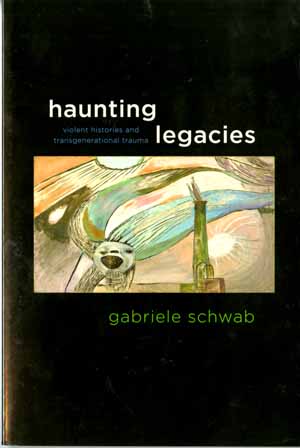 |
Gabriele Schwab. Haunting Legacies: Violent Histories and Transgenerational Trauma. (Forthcoming) This is a book project on violent histories, transgenerational trauma and political conflict. Working at the intersections of literary studies, anthropology and trauma theory, the book approaches violent histories from the perspective of transgenerational trauma and explores the role of literature and writing in witnessing and mourning, conflict resolution and reconciliation. Grounded in the reading of texts --fiction, poetry, memoirs and creative nonfiction -the book includes reflections on Jewish and German holocaust literature, and postcolonial literature from the US, New Zealand, Chile and Guatemala and deals with diverse topics such as traumatic writing, memory, torture, rape and disappearances as well as the cultural politics of emotions (guilt, shame, humiliation, and grief). The theoretical framework draws on trauma theory, narratology and critical theory, including Arendt, Agamben, Derrida, Mbembe, Fanon and Ngugi Wa Thiong'O. It will also include reflections on redress and reconciliation movements as well as human rights interventions in violent political conflicts. |
Jacques Derrida. The Animal That Therefore I Am. Edited by Marie-Louise Mallet, Translated by David Wills. (Fordham University Press, 2008) The Animal That Therefore I Am is the long-awaited translation of the complete text of Jacques Derridas ten-hour address to the 1997 Cérisy conference entitled The Autobiographical Animal, the third of four such colloquia on his work. The book was assembled posthumously on the basis of two published sections, one written and recorded session, and one informal recorded session. The book is at once an affectionate look back over the multiple roles played by animals in Derridas work and a profound philosophical investigation and critique of the relegation of animal life that takes place as a result of the distinctiondating from Descartesbetween man as thinking animal and every other living species. That starts with the very fact of the line of separation drawn between the human and the millions of other species that are reduced to a single the animal. Derrida finds that distinction, or versions of it, surfacing in thinkers as far apart as Descartes, Kant, Heidegger, Lacan, and Levinas, and he dedicates extended analyses to the question in the work of each of them. The books autobiographical theme intersects with its philosophical analysis through the figures of looking and nakedness, staged in terms of Derridas experience when his cat follows him into the bathroom in the morning. In a classic deconstructive reversal, Derrida asks what this animal sees and thinks when it sees this naked man. Yet the experiences of nakedness and shame also lead all the way back into the mythologies of mans dominion over the beasts and trace a history of how man has systematically displaced onto the animal his own failings or bêtises. The Animal That Therefore I Am is at times a militant plea and indictment regarding, especially, the modern industrialized treatment of animals. However, Derrida cannot subscribe to a simplistic version of animal rights that fails to follow through, in all its implications, the questions and definitions of life to which he returned in much of his later work. |
|
David Theo Goldberg. The Threat of Race: Reflections on Racial Neoliberalism. (Wiley-Blackwell, 2008). Written by a renowned scholar of critical race theory, The Threat of Race explores how the concept of race has been historically produced and how it continues to be articulated, if often denied, in todays world. - A major new study of race and racism by a renowned scholar of critical race theory |
|
Haracio Legrás. Literature and Subjection: The Economy of Writing and Marginality in Latin America. (University of Pittsburgh Press, 2008). Legrás views the factors that have both formed and stifled the integration of peripheral experiences into Latin American literature. He analyzes key works by novelists Juan José Saer (The Witness), Nellie Campobello (Cartucho), Roa Bastos (Son of Man), and Jose María Arguedas (The Fox from Up Above and the Fox from Down Below), among others, to provide a theoretical basis for understanding the plight of the author, the peripheral voice, and the confines of the literary medium. |
|
George Marcus and Neni Panourgi, editors. Ethnographica Moralia: Experiments in Interpretive Anthropology. (New York: Fordham University Press, 2008). Clifford Geertz, in his 1973 Interpretation of Cultures, brought about an epistemological revolution unprecedented since Lévi-Strauss's structuralism. In place of Lévi-Strauss's deep structures, Geertz placed "deep meanings" and "thick descriptions," in a synthesis of the American tradition of cultural anthropology and new qualitative approaches in the humanities. He powerfully synthesized and gave the heart of anthropology's tradition a new and enriched conceptual language that came to be known as "interpretive anthropology" and that placed meaning over form in the center of social analysis. This book maps the circuits of cross-fertilizations among disciplines in the humanities and social sciences that have developed from Geertz's "interpretive turn." Panourgia and Marcus bring together anthropologists working in various parts of the world (Greece, Bali, Taiwan, the United States) with classicists, historians, and scholars in cultural studies. The volume takes into account global realities such as 9/11 and the opening of the Cypriot Green Line and explores the different ways in which Geertz's anthropology has shaped the pedagogy of their disciplines and enabled discussions among them. Focusing on place and time, locations and temporalities, the essays in this volume interrogate the fixity of interpretation and open new spaces of inquiry. The volume addresses a wide audience fromthe humanities and the social sciences-anyone interested in the development of a new humanism that will relocate the human as a subject of social action. |
|
George Marcus and Paul Rabinow with James Faubion and Tobias Rees. Designs for an Anthropology of the Contemporary: Dialogues Between George Marcus and Paul Rabinow. (Durham: Duke University Press, 2008). In this compact volume, two of anthropology's most influential theorists, Paul Rabinow and George E. Marcus, engage in a series of conversations about the past, present, and future of anthropological knowledge and practice. James Faubion joins in several exchanges to facilitate and elaborate the dialogue, and Tobias Rees moderates the discussions and contributes an introduction and an afterword to the volume. Most of the conversations are focused on contemporary challenges to how anthropology understands its subject and how ethnographic research projects are designed and carried out. Rabinow and Marcus reflect on what remains distinctly anthropological about the study of contemporary events and processes, and they contemplate productive new directions for the field. The two converge in Marcus's emphasis on the need to redesign pedagogical practices for training anthropological researchers and in Rabinow's proposal of collaborative initiatives in which ethnographic research designs could be analyzed, experimented with, and transformed. Both Rabinow and Marcus participated in the milestone collection Writing Culture: The Poetics and Politics of Ethnography. Published in 1986, Writing Culture catalyzed a reassessment of how ethnographers encountered, studied, and wrote about their subjects. In the opening conversations of Designs for an Anthropology of the Contemporary, Rabinow and Marcus take stock of anthropology's recent past by discussing the intellectual scene in which Writing Culture intervened, the book's contributions, and its conceptual limitations. Considering how the field has developed since the publication of that volume, they address topics including ethnography's self-reflexive turn, scholars' increased focus on questions of identity, the Public Culture project, science and technology studies, and the changing interests and goals of students. Designs for an Anthropology of the Contemporary allows readers to eavesdrop on lively conversations between anthropologists who have helped to shaped their field's recent past and are deeply invested in its future. |
|
Carrie Noland and Sally Ness, editors. Migrations of Gesture. (Minneapolis: University of Minnesota Press, 2008). The cultural significance of gesture as a human expression. Derived from the Latin verb gerereto carry, act, or dogesture has accrued critical currency but has remained undertheorized. Migrations of Gesture addresses this absence and provides a complex theory on the value of gesture for understanding human sign production. Gestures migrate from body to body, from one medium to another, and between cultural contexts. Juxtaposing distinct approaches to gesture in order to explore the ways in which they at once shape and are influenced by culture, the contributors examine the works of writers Henri Michaux and Stéphane Mallarmé, photographers Henri Cartier-Bresson and Robert Frank, and filmmakers Hou Hsiao-Hsien and Martin Arnold, along with cultural practices such as gang walking, ballet, and classical Indian dance. The authors move deftly between an organic, phenomenal appreciation of human expression and a historicist, semiotic understanding of how the human is itself created through gestural routines. Contributors: Mark Franko, U of California, Santa Cruz; Ketu H. Katrak, U of California, Irvine; Akira Mizuta Lippit, U of Southern California; Susan A. Phillips, Pitzer College; Deidre Sklar; Lesley Stern, U of California, San Diego; Blake Stimson, U of California, Davis. |
|
Kavita Philip and Beatriz da Costa, editors. Tactical Biopolitics: Art, Activism, and Technoscience. (Boston: MIT Press, 2008). Popular culture in this "biological century" seems to feed on proliferating fears, anxieties, and hopes around the life sciences at a time when such basic concepts as scientific truth, race and gender identity, and the human itself are destabilized in the public eye. Tactical Biopolitics suggests that the political challenges at the intersection of life, science, and art are best addressed through a combination of artistic intervention, critical theorizing, and reflective practices. Transcending disciplinary boundaries, contributions to this volume focus on the political significance of recent advances in the biological sciences and explore the possibility of public participation in scientific discourse, drawing on research and practice in art, biology, critical theory, anthropology, and cultural studies. After framing the subject in terms of both biology and art, Tactical Biopolitics discusses such topics as race and genetics (with contributions from leading biologists Richard Lewontin and Richard Levins); feminist bioscience; the politics of scientific expertise; bioart and the public sphere (with an essay by artist Claire Pentecost); activism and public health (with an essay by Treatment Action Group co-founder Mark Harrington); biosecurity after 9/11 (with essays by artists' collective Critical Art Ensemble and anthropologist Paul Rabinow); and human-animal interaction (with a framing essay by cultural theorist Donna Haraway). |
|
Mark Poster and David Savat, editors. Deleuze and New Technology (Edinburgh: University of Edinburgh Press, 2008) In a world where our lives are increasingly mediated by technologies it is surprising that more attention is not paid to the work of Gilles Deleuze. This is especially strange given Deleuze's often explicit focus and reliance on the machine and the technological. This volume offers readers a collective and determined effort to explore not only the usefulness of key ideas of Deleuze in thinking about our new digital and biotechnological future but, also aims to take seriously a style of thinking that negotiates between philosophy, science and art.This exciting collection of essays will be of relevance not only to scholars and students interested in the work of Deleuze but, also, to those interested in coming to terms with what might seem an increasing dominance of technology in day to day living. Contributors to this volume include: William Bogard, Abigail Bray, Ian Buchanan, Verena Conley, Ian Cook, Tauel Harper, Timothy Murray, Saul Newman, Luciana Parisi, Patricia Pisters, Mark Poster, Horst Ruthrof, David Savat, Bent Meier Sørensen and Eugene Thacker. |
|
Jared Sexton. Amalgamation Schemes: Antiblackness and the Critique of Multiracialism. (University of Minnesota Press, 2008) Despite being heralded as the answer to racial conflict in the postcivil rights United States, the principal political effect of multiracialism is neither a challenge to the ideology of white supremacy nor a defiance of sexual racism. More accurately, Jared Sexton argues in Amalgamation Schemes, multiracialism displaces both by evoking long-standing tenets of antiblackness and prescriptions for normative sexuality. In this timely and penetrating analysis, Sexton pursues a critique of contemporary multiracialism, from the splintered political initiatives of the multiracial movement to the academic field of multiracial studies, to the melodramatic media declarations about the browning of America. He contests the rationales of colorblindness and multiracial exceptionalism and the promotion of a repackaged family values platform in order to demonstrate that the true target of multiracialism is the singularity of blackness as a social identity, a political organizing principle, and an object of desire. From this vantage, Sexton interrogates the trivialization of sexual violence under chattel slavery and the convoluted relationship between racial and sexual politics in the new multiracial consciousness. An original and challenging intervention, Amalgamation Schemes posits that multiracialism stems from the conservative and reactionary forces determined to undo the gains of the modern civil rights movement and dismantle radical black and feminist politics. |
|
Gayatri Chakravorty Spivak. Other Asias. (Wiley-Blackwell, 2008) In this major intervention into the 'Asian Century', Gayatri Chakravorty Spivak challenges the reader to re-think Asia, in its political and cultural complexity, in the global South and in the metropole. - Major work from one of the worlds most distinguished literary and cultural theorists |
|
Steve Mailloux. Disciplinary Identities: Rhetorical Paths of English, Speech, and Composition. (New York: Modern Language Association, 2006). What are the historical relations among academic disciplines focused on oral and written rhetoric? In Disciplinary Identities, Steven Mailloux examines the formation of English literary studies, speech communication, and composition, explaining how these fields came to be shaped and separated as they are today. In so doing, Mailloux illustrates the interpretive power of a technique he calls rhetorical hermeneutics: his critical history of disciplinary formations both describes rhetoric as a topic of study and uses it as a tool for understanding how scholarship is organized professionally and politically. Mailloux thus traces the paths taken by the topic of rhetoric as it migrates among disciplines. At the same time, he examines the tropes, arguments, narratives, and other pieces of rhetoric used by practitioners to shape disciplinary identities. Mailloux also uses rhetorical hermeneutics to explore the intersections of academic disciplines and nonacademic public spheres, moving from the role of nineteenth-century African American intellectuals in and outside the academy to that of the academic intellectual within post-September 11 cultural politics. Through multidisciplinary inquiry, Disciplinary Identities seeks to engage all teachers and scholars of the language arts in a renewed conversation about our shared history and our mutual devotion to pedagogy, criticism, history, and theory. |
|
Bill Maurer. Pious Property: Islamic Mortgages in the United States. (New York: Russell Sage Foundation, 2006). Owning a home has always been central to the American dream. For the more than one million Muslims in the United States, this is no exception. However, the Qur'an forbids the payment of interest, which places conventional home financing out of reach for observant Muslims. To meet the growing Muslim demand for home purchases, a market for home financing that would be halal, or permissible under Islamic law, has emerged. In Pious Property, anthropologist William Maurer profiles the emergence of this new religiously based financial service and explores the ways it reflects the influence of Muslim practices on American economic life and vice versa. Pious Property charts the development of Islamic mortgages in America, starting with Islamic interpretations of the prohibition against ribaliterally translated as "increase" but interpreted as "usury" or "interest." Maurer then explores the different practices that have emerged as permissible options for Islamic homebuyerssuch as lease-to-own arrangements, profit-loss sharing, and cost-plus contractsand explains how they have gained acceptance in the Islamic community by relying on payment schemes that avoid standard interest rate payments. Using interviews with Muslim homebuyers and financiers, and in-depth analysis of two companies that provide mortgage alternatives to Muslims, Maurer discovers an interesting paradox: progressive Muslims tend to use financial contracts that seemingly comply better with the prohibition against interest, while traditional Muslims seem more inclined to take on financing very similar to interest-based mortgages. Maurer finds that Muslims make their decisions about using Islamic mortgage alternatives based not only on the views of religious scholars, but also on their conceptions of how business is supposed to be conducted in America. While one form of Islamic financing is seemingly more congruent with the prohibition against riba, the other exhibits more of the qualities of American mortgagesanonymity and standardized forms. The appearance that an Islamic financing instrument is legal and professional leaves many Muslim homebuyers with the impression that it is halal, revealing the influence of American capitalism on Muslim-Americans understanding of their religious rules. The market for halal financial products exists at the intersection of American and Islamic culture and is emblematic of the way that, for centuries, America's newcomers have adapted to and changed the fabric of American life. In Pious Property, William Maurer explores this rapidly growing economic phenomenon with historical perspective and scholarly insight. |
|
Mark Poster. Information Please: Culture and Politics in the Age of Digital Machines. (Durham: Duke University Press, 2006). Information Please advances the ongoing critical project of the media scholar Mark Poster: theorizing the social and cultural effects of electronically mediated information. In this book Poster conceptualizes a new relation of humans to information machines, a relation that avoids privileging either the human or the machine but instead focuses on the structures of their interactions. Synthesizing a broad range of critical theory, he explores how texts, images, and sounds are made different when they are mediated by information machines, how this difference affects individuals as well as social and political formations, and how it creates opportunities for progressive change. Posters critique develops through a series of lively studies. Analyzing the appearance of Sesame Streets Bert next to Osama Bin Laden in a New York Times news photo, he examines the political repercussions of this Internet hoax as well as the unlimited opportunities that Internet technology presents for the appropriation and alteration of information. He considers the implications of open-source licensing agreements, online personas, the sudden rise of and interest in identity theft, peer-to-peer file sharing, and more. Focusing explicitly on theory, he reflects on the limitations of critical concepts developed before the emergence of new media, particularly globally networked digital communications, and he argues that, contrary to the assertions of Michael Hardt and Antonio Negri, new media do not necessarily reproduce neoimperialisms. Urging a rethinking of assumptions ingrained during the dominance of broadcast media, Poster charts new directions for work on politics and digital culture. |
|
Ackbar Abbas and John Nguyet Erni, editors. Internationalizing Cultural Studies. An Anthology. (Oxford: Blackwell, 2005). Internationalizing Cultural Studies is an unprecedented resource that introduces and consolidates cultural studies literature from diverse locales and intellectual traditions. |
|
Bill Maurer. Mutual Life, Limited: Islamic Banking, Alternative Currencies, Lateral Reason. (Princeton University Press, 2005). Why are people continually surprised to discover that money is "just" meaning? Mutual Life, Limited spends time among those who, in acknowledging the fictions of finance, are making money anew. It documents ongoing efforts to remake money and finance by Islamic bankers who seek to avoid interest and local currency proponents who would stand outside of national economies. It asks how alternative moneys both escape and reenact dominant forms of money and finance, and reflects critically on their broader implications for scholarship. Based on fieldwork among participants in a local currency system in Ithaca, New York, and among Islamic banking practitioners in the United States, Indonesia, and elsewhere, this book exploits the convergence between the reflexivity of monetary alternatives and social inquiry by questioning the equivalence between money and ethnography. Can money ever be adequate to the value backing it? Can social description ever be adequate to messy and contingent realities? Bill Maurer's ethnographic discovery is that ethnography as such--the holistic description of a way of life--cannot be sustained when faced with a set of practices that anticipates and incorporates it in advance. His fluently written book represents an unprecedented critique of social scientific approaches to money through an ethnographic description of specific monetary alternatives, while also speaking broadly to the very problem of anthropological knowledge in the twenty-first century. |
|
J. Hillis Miller. Literature as Conduct: Speech Acts in Henry James. (Fordham University Press, 2005) The work of a master critic writing at the peak of his powers, this magisterial book draws on speech act theory, as it originated with J. L. Austin and was further developed by Paul de Man and Jacques Derrida, to investigate the many dimensions of doing things with words in Jamess fiction. Three modes of speech act occur in Jamess novels. First, Jamess writing of his fictions is performative. He puts on paper words that have the power to raise in the reader the phantoms of imaginary persons. Second, Jamess writing does things with words that do other things in their turn, including conferring on the reader responsibility for further judgment and action: for example, teaching Jamess novels or writing about them. Finally, the narrators and characters in Jamess fictions utter speech acts that are forms of doing things with words promises, declarations, excuses, denials, acts of bearing witness, lies, decisions publicly attested, and the like. The action of each work by James, he shows, is brought about by its own idiosyncratic repertoire of speech acts. In careful readings of six major examples, The Aspern Papers, The Portrait of a Lady, The Awkward Age, The Wings of the Dove, The Golden Bowl, and The Sense of the Past, Miller demonstrates the value of speech act theory for reading literature. |
|
Kavita Philip. Civilizing Natures: Race, Resources and Modernity in Colonial South India. (Rutgers University Press [U.S.], 2004), (Orient Longman [Asia/UK], 2003). Science was a central pillar of colonialism, but the converse holds true as well: colonialism profoundly shaped the character of nineteenth-century science. Civilizing Natures unravels unexpected relationships between science, technology, and administrative systems in colonial India from the 1850s to the 1930s, deepening our perspective on continuing conflicts over race, resources, and empire. Botanists, anthropologists, and foresters had their most important sources of data-nature and natives-located at colonial sites. In the hilly, forested regions of Madras Presidency, tribal populations were studied by ethnographers, managed by revenue officials, recruited by plantation contractors, and modernized by missionaries. Racial constructions of nature and modernity helped criminalize and domesticate unruly natives. This is a story about the construction of nature in southern India that is deeply local and irreducibly global. Through detailed case studies, Kavita Philip shows how race and nature are fundamental to understanding colonial modernities. Through its insightful combination of methodologies from both the humanities and the social sciences, Civilizing Natures complicates our understandings of the relationships between science and religion, pre-modern and civilized, environment and society. |
|
Étienne Balibar. We, The People of Europe? Reflections on Transnational Citizenship. Translated by James Swenson (Princeton UP, 2003). Translation of LEurope, lAmérique, la Guerre. Réflexions sur la médiation européenne. (Paris: Editions La Découverte, 2003). Étienne Balibar has been one of Europe's most important philosophical and political thinkers since the 1960s. His work has been vastly influential on both sides of the Atlantic throughout the humanities and the social sciences. In We, the People of Europe?, he expands on themes raised in his previous works to offer a trenchant and eloquently written analysis of "transnational citizenship" from the perspective of contemporary Europe. Balibar moves deftly from state theory, national sovereignty, and debates on multiculturalism and European racism, toward imagining a more democratic and less state-centered European citizenship. Although European unification has progressively divorced the concepts of citizenship and nationhood, this process has met with formidable obstacles. While Balibar seeks a deep understanding of this critical conjuncture, he goes beyond theoretical issues. For example, he examines the emergence, alongside the formal aspects of European citizenship, of a "European apartheid," or the reduplication of external borders in the form of "internal borders" nurtured by dubious notions of national and racial identity. He argues for the democratization of how immigrants and minorities in general are treated by the modern democratic state, and the need to reinvent what it means to be a citizen in an increasingly multicultural, diversified world. A major new work by a renowned theorist, We, the People of Europe? offers a far-reaching alternative to the usual framing of multicultural debates in the United States while also engaging with these debates. |
|
Kavita Philip, Mahmood Monshipouri, Neil Englehart and Andrew J. Nathan, editors. Constructing Human Rights in the Age of Globalization. (M.E. Sharpe, 2003). Both human rights and globalization are powerful ideas and processes, capable of transforming the world in profound ways. Notwithstanding their universal claims, however, the processes are constructed, and they draw their power from the specific cultural and political contexts in which they are constructed. Far from bringing about a harmonious cosmopolitan order, they have stimulated conflict and opposition. In the context of globalization, as the idea of human rights has become universal, its meaning has become one more terrain of struggle among groups with their own interests and goals. Part I of this volume looks at political and cultural struggles to control the human rights regime -- that is, the power to construct the universal claims that will prevail in a territory -- with respect to property, the state, the environment, and women. Part II examines the dynamics and counterdynamics of transnational networks in their interactions with local actors in Iran, China, and Hong Kong. Part III looks at the prospects for fruitful human rights dialogiue between "competing universalisms" that by definition are intolerant of conradiction and averse to compromise. |
|
Étienne Balibar. Politics and the Other Scene. Translated by Daniel Hahn. (London: Verso Books, 2002). In Politics and the Other Scene Balibar deepens and extends the work he first developed with Immanuel Wallerstein in Race, Nation, Class. Exploring the theme of universalism and difference, he addresses questions such as European racism, the notion of the border, whether a European citizenship is possible or desirable, violence and politics, identity and emancipation. |
|
John H. Smith. Dialectics of the Will: Freedom, Power, and Understanding in Modern French and German Thought. (Wayne State University Press, 2000). John H. Smith looks at the act of willing as existing in a domain of contradictions, such as freedom and determinism and unity and fragmentation, to explain how we can be considered free beings. Dialectics of the Will develops a new model of human agency by analyzing modern and postmodern theory in Germany and France. The dialectical model of the will that Smith posits contributes to ongoing discussions of freedom, power, and understanding in Western thought. After examining a range of historical debates about the will and the possibilities and limitations essential to this concept, he examines the works of Kant, Nietzsche, and Heidegger and their reception by Adorno, Lacan, Habermas, Foucault, Gadamer, and Derrida. By engaging conflicting theoretical positions of contemporary French and German thinkers, Smith demonstrates how theorists rely upon and can benefit from a dialectical conception of willing. |
|
|
Lindon Barrett. Blackness and Value: Seeing Double. (Cambridge University Press, 1999). Blackness and Value investigates the principles by which "value" operates, and asks if it is useful to imagine that the concepts of racial blackness and whiteness in the United States operate in terms of these principles. Testing these concepts by exploring various theoretical approaches and their shortcomings, Lindon Barrett finds that the gulf between "the street" (where race is acknowledged as a powerful enigma) and the literary academy (where until recently it has not been) can be understood as a symptom of racial violence. While commonly approaches to race and value are examined historically or sociologically, this intriguing study provides a new critical approach that speaks to theorists of race as well as gender and queer studies. |
Étienne Balibar. Spinoza and Politics. Translated by Peter Snowden. (London: Verso Books, 1998). With Hobbes and Locke, Spinoza is arguably one of the most important political philosophers of the modern era, a premier theoretician of democracy and mass politics. In this English translation of his 1985 classic, Spinoza et la Politique, Étienne Balibar presents a synoptic account of Spinoza's major works, admirably demonstrating relevance to his contemporary political life. Balibar carefully situates Spinoza's major treatises in the period in which they were written. In successive chapters, he examines the political situation in the United Provinces during Spinoza's lifetime, Spinoza's own religious and ideological associations, the concept of democracy developed in the Theologico-Political Treatise, the theory of the state advanced in the Political Treatise and the anthropological basis for politics established in the Ethics. |
|
Gabriele Schwab. The Mirror and the Killer-Queen: Otherness in Literary Language. (Indiana University Press, 1996). Gabriele Schwab revitalizes debates about literatures cultural function by exploring literary experience as an encounter with otherness. Drawing on literary theory, anthropology, and psychoanalysis, Schwab contends that literature facilitates contact with cultures that may seem foreign to us. At the same time, literature can render the familiar strange, and foreground what a culture tends to repress. At its best, literature challenges the very boundaries of the culture from which it emerges. Schwabs readings of writers such as Hawthorne, Faulkner, Joyce, Lewis Carroll, Djuna Barnes, Marguerite Duras, and John Cage demonstrate the centrality of aesthetics and the literary to studies of otherness and cultural contact. |
|
Alexander Gelley, editor. Unruly Examples: On the Rhetoric of Exemplarity. (Stanford University Press, 1995). This collection of twelve essays aims to demonstrate that while example has a rich genealogy in the rhetorical tradition, it also involves issues that are central to current theories of meaning and ethics in literature and philosophy. Whatever is designated as example functions as a nexus of converging articulations: What is it an example of? To whom is the example directed? What makes it 'exemplary', that is, what elevates the singular instance to authoritative status? Is the example merely one - a singular, an accident - or the One, a paradigm or paragon? In this volume, the dimensions of these and other questions for literary theory and philosophy are explored in texts ranging across the Western tradition, from the Bible onwards. |
| Image | Description |
|---|---|
Derrida, Deleuze, Psychoanalysis. Edited by Gabriele Schwab. New York: Columbia University Press, 2007. Derrida, Deleuze, Psychoanalysis explores the critical relationship between psychoanalysis and the work of Derrida (Speech and Phenomena, Of Grammatology, and his later writing on autoimmunity, cruelty, war, and human rights) and Deleuze (A Thousand Plateaus, Anti-Oedipus, and more). Each essay illuminates a specific aspect of Derrida's and Deleuze's perspectives on psychoanalysis: the human-animal boundary; the child's polymorphism; the face or mouth as constitutive of ethical responsibility toward others; the connections between pain and suffering and political resistance; the role of masochism in psychoanalytic thinking; the use of psychoanalytic secondary revision in theorizing film; and the political dimension of the unconscious. Placing a particular emphasis on liminal figurations of the human and challenges to discourses on free will, the essays explore shared concerns in Derrida and Deleuze with regard to history, politics, the political unconscious, and resistance. By addressing the need to overcome the split between the psychological and the political, Derrida, Deleuze, Psychoanalysis illuminates the ongoing relevance of psychoanalysis to critical interrogations of culture and politics. |
|
Accelerating Possession: Global Futures of Property and Personhood. Edited by Gabriele Schwab and Bill Maurer. New York: Columbia University Press, 2006. Accelerating Possession is a groundbreaking collection of essays that examines how recent economic movements have revolutionized the relationship between property and personhood. These prominent scholars argue that in our present age, globalization, rampant privatization, and biotechnology have irrevocably changed traditional ideas of property and the self. Definitions of property no longer correspond to the configurations of the person who owns or is subjected to property. Self and ownership have a whole new arithmetic. In these essays, privatization is understood as an array of interconnected processes and relationships through which the capitalist marketplace controls, among other things, the political rights, social membership, and knowledge production that constitute personhood. The contributors believe such processes are accelerating profoundly, and they examine the effects via a range of topics, including the invention of property rights in U.S.-occupied Iraq, the work of John Locke, the art of Jenny Holzer, and the writing of Octavia Butler and Stanislaw Lem. They explore the synergy and dissonance between conceptions of the private as marketable and the private as inalienable, and consider how the contemporary transformations and futures of property and personhood relate to concepts of citizenship, state, culture, and education. These essays were all written with the guiding belief that the evolving relationship between ownership and the self has a fundamental effect on debates in critical theory. The essays are methodologically linked through their emphasis on the linguistic and rhetorical, as well as the philosophical and epistemological. Their focus on reflections of property and personhood in literary, textual, or artistic objects makes this collection a vital cross-disciplinary tool. |
|
Culture and the Problem of the Disciplines. Edited by John Carlos Rowe. New York: Columbia University Press, 1998. What is the university's role in the production of cultural ideals? With increasingly interdisciplinary approaches being employed in scholarship, can we speak of discrete fields of study? The results of a collaborative research project by the Critical Theory Institute at the University of California, Irvine, this collection explores the role that scholars and universities play in shaping and defining culture, and how teaching and research institutions are changing in response to international movements and social forces. Investigating the way "high" culture (literature, liberal education) and popular culture (fashion, film) are dealt with in the classroom, these essays show that the "culture wars" of the 1980s and '90s are by no means over; they have simply warped into new, less visible struggles for control of educational funding, curricula, academic "standards," and pedagogical authority. The essays in this volume range widely. Sacvan Bercovitch defends the literary ideal of culture through his examination of Faulkner's Light in August; Linda Williams explores visual culture through Hitchcock's Psycho; and Leslie Rabine considers the intersections of fashion, race, and gender. J. Hillis Miller details how "cultural studies" might positively change the structure of the university, and Mark Poster challenges historians to develop methods of representing history that are adequate to the complexity of lived experience. |
|
|
Politics, Theory and Contemporary Culture. Edited by Mark Poster. New York: Columbia University Press, 1993. The contributors to this study confront both recent, startling upheavals in international politics and the reorganization of foundations in the humanities and social sciences in order to re-examine Western political thought. |
|
The States of "Theory": History, Art, and Critical Discourse. Edited by David Carroll. New York: Columbia University Press, 1990. At a time when it is becoming increasingly fashionable to be `against theory' this collection constitutes a critical investigation and rethinking of the grounds and possibilities of theory and the place that critical function theory can serve within various disciplines, notably history and aesthetics. |
The Aims of Representation: Subject/Text/History. Edited byMurray Krieger. New York: Columbia UP, 1987. Stanford: Stanford UP, 1993. One of the more important and original collections of theoretical essays in the field. . . . The issues it addresses are no less pertinent now than they were in 1987; they seem, indeed, to be of perennial importance.Anton Kaes, University of California, Berkeley
|

